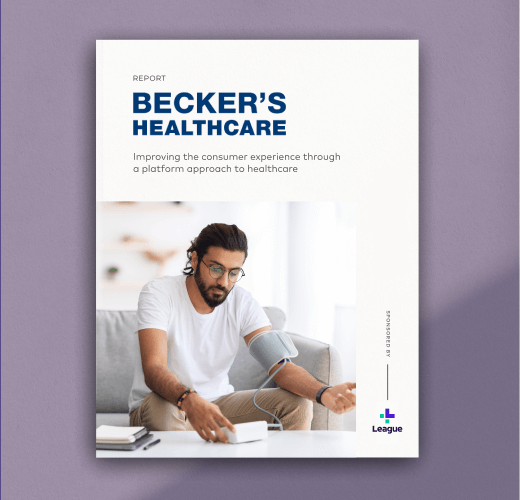Summary
- The AHIP Consumer Experience and Digital Health Forum highlights key tactics for health plans to enhance member experiences including data interoperability and AI/ML.
- Health plans must address digital inequities by designing healthcare member engagement platforms that are accessible to all and account for social determinants of health.
- Building trust with members requires personalized experiences, transparent data usage, and partnerships with community leaders.
The AHIP Consumer Experience and Digital Health Forum took place in Nashville, Tennessee, in mid-September. Throughout the conference, a number of discussions focused on tactics health plans, or payer organizations, can deploy to improve member experiences.
Prominent themes included leveraging digital health tools and technologies to:
- Advance health equity
- Unlock health data to improve interoperability
- Leverage artificial intelligence (AI) and machine learning (ML) to make health data more actionable
- Build trust with members
Advance health equity
Improving health equity has gained the C-suite’s attention during recent years. Payer organizations recognize that technology is an enabler of health equity, but it alone is not the solution to addressing digital inequities.
Socioeconomic factors account for 47% of health outcomes, while clinical care accounts for only 16% of outcomes.¹
County Health Rankings
To improve health equity, organizations must make digital healthcare consumer experiences universally accessible. This requires data sets to account for bias and consumer profiles to encompass social determinants of health. Social determinants of health can change quickly, however, so it’s important for organizations to check in with members often and ask sensitive questions.
Health plans can also connect member health experiences into social and community resources. These partnerships are essential to addressing barriers to care that are unique to individual communities, such as transportation or internet access.
Unlock health data to improve interoperability
Integrating data sources is necessary to improve member experiences because it will enable the real-time insights, actions and interventions required to improve health outcomes.
To truly unlock the power of health information, data must be democratized and integrated across fundamental systems. Discussions at AHIP suggest that industry-wide adoption of Fast Healthcare Interoperability Resources (FHIR) standards, which define how healthcare data is exchanged between different systems, is a critical enabler of interoperability. The adoption of initiatives the U.S. federal government is driving to support FHIR, such as Trusted Exchange Framework and Common Agreement (TEFCA) and United States Core Data for Interoperability (USCDI) guidelines, is also essential.
FHIR standards along with TEFCA and UCSDI, in fact, hold potential to lay the foundation for interoperable health data that can harness the power of AI and ML to enable next-generation member experiences.
Leverage AI and ML to make health data more actionable
Understanding and utilizing AI and ML is quickly becoming necessary to deliver next best actions that guide members in their unique health journeys. With real-time data insights and AI and ML models that account for bias and social determinants of health, health plans can deliver proactive, personalized experiences that close gaps in care and improve outcomes.
The global AI in healthcare market is projected to have a compound annual growth rate (CAGR) of 46.1% from 2021 to 2028.²
Vantage Market Research
The inherent need to use best-in-class technologies for data collection and management has catalyzed platform partnerships in healthcare. Leveraging a partner’s platform infrastructure enables organizations to develop and deploy personalized experiences without starting from scratch, creating their own AI and ML models or maintaining the platform.
Build trust with members
Leaders speaking at AHIP acknowledged that gaining consumer trust is critical to encouraging health engagement and improving outcomes. However, many people find it difficult to trust — technology, their health plans or even their physicians. To account for this, digital strategies should enable intimate member experiences that are founded on personalization.
Ninety-one percent of consumers say they are more likely to shop with brands that provide offers and recommendations that are relevant to them.³
Accenture
Personalization is driven by data, so it’s important to help members understand how and why their data is being collected and used. When health plans use this data to consistently deliver personalized health experiences — that meet members where they are, when they need it most — trust, engagement and loyalty deepens.
When personalizing experiences, the significance of engaging community leaders to earn trust cannot be overlooked. Forward-looking health plan executives are partnering with credible individuals, from faith-based and community-based organizations, to earn trust more quickly, particularly in under-resourced areas.
What’s next: transforming the member experience
These themes from AHIP CDF 2022 illustrate that member health experiences must be driven by real-time, interoperable data that harnesses AI and ML to drive deep personalization. Achieving this, however, will require health plans to transform member experiences. Only through such transformation can organizations improve member experiences to establish and maintain the trust that sustains engagement, earns loyalty and improves outcomes for individuals and populations.

Transform CX with a platform approach
Explore how a CX platform enables seamless and personalized healthcare experiences.
¹Source: Carlyn M. Hood, Keith P Gennuso, Geoffrey R. Swain, Bridget B. Catlin; Relationships Between Determinant Factors and Health Outcomes; County Health Rankings, Volume 50, Issue 2 (2015)
²Source: Artificial Intelligence in Healthcare Market; Vantage Market Research, January 2015
³Source: Why Brands Must Move From Communication to Conversation for Greater Personalization: Pulse Check 2018; Accenture
